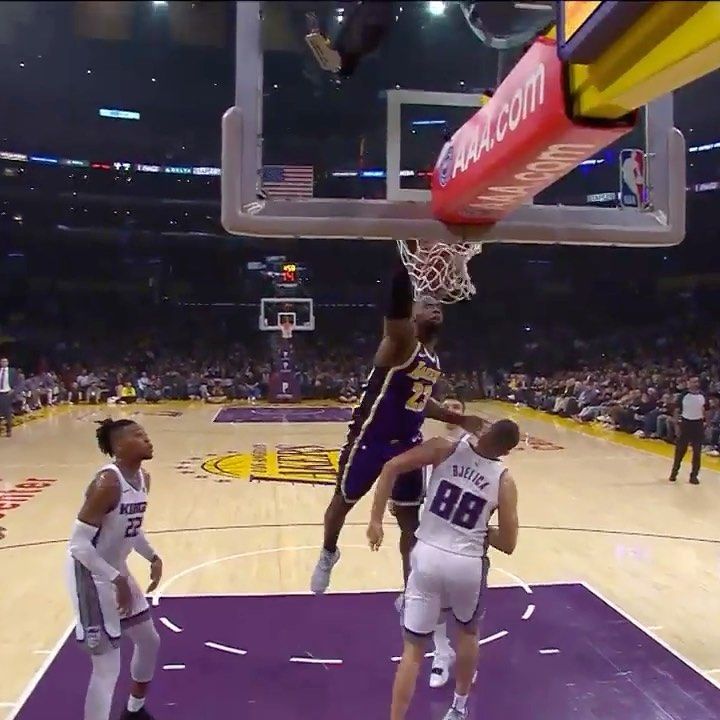Home »
Misc »
How many yards is a nba basketball court
How many yards is a nba basketball court
How Many Yards is a Basketball Court?
Basketball is a game that is played in a rectangular court. It can be played indoors or outdoors, and the court itself is often used for conditioning drills. And speaking of conditioning drills, if you want to be precise about running laps, it would also be best to know the exact measurements of the basketball court in yards or in other units of measurement. So, do you know how many yards is a basketball court?
Before we answer that question, let us see the standard basketball court dimensions used in high school and college competitions, as well as professional leagues such as the NBA and WNBA.
How Long is a Basketball Court?The length and dimensions of a basketball court depend on the level of competition. For example, in high school basketball competitions, the basketball court’s standard dimensions are 84 feet by 50 feet. In junior high school, the standard size of the basketball court is 74 feet long and 42 feet wide.![]()
The free throw line, or the foul line, measures 15 feet from the front of the backboard, and 18 feet and 10 inches from the baseline. The key or the lane in a high school basketball court is typically 12 feet in width. The backboard may extend four feet over the baseline and into the key and an arc six feet in length that runs from the free throw line, completing the lane.
The three-point line in high school also differs from college and the NBA. It is typically 19 feet and nine inches at the farthest. Junior high school pretty much uses the same dimensions.
How Long is a NCAA College Basketball?In college, a basketball court measurement is 94 feet long and 50 feet wide. The free throw line (or foul line) is the same as in high school and professional courts at 15 feet from the front of the backboard and 18 feet and 10 inches from the baseline.
The lane or the paint is also similar in dimensions in high school basketball. It has a width of 12 feet, with the backboard extending four feet over the baseline in the direction of the key. To complete the lane or key, a six-foot arc extends from the foul line.
To complete the lane or key, a six-foot arc extends from the foul line.
It is the distance of the three-point arc that differs from high school basketball. That distance measures 20.75 feet or 20 feet and 9 inches, having a restricted area with a radius of three feet from the center of the basket. The restricted area is a place underneath the basket where a defensive player cannot draw charges. In order to draw a charge, the defensive player must establish his feet outside the restricted area.
What’s the Official Size of NBA Basketball Court?An NBA basketball court (as well as the WNBA) has a dimension of 94 feet by 50 feet, the same as the standard NCAA basketball court. Similar to the other basketball court mentioned above, the free throw line is 15 feet away from the front of the backboard and 18 feet and 10 inches from the baseline.
The differences are the measurements of the key, the distance of the arc or the three-point line, and the size of the restricted area. Instead of 12 feet, the key or paint in the NBA is 16 feet wide, with the backboard extending four feet over the baseline to the direction of the key. A six-foot arc (or semi-circle) runs away from the free throw line from the basket to complete the lane.
Instead of 12 feet, the key or paint in the NBA is 16 feet wide, with the backboard extending four feet over the baseline to the direction of the key. A six-foot arc (or semi-circle) runs away from the free throw line from the basket to complete the lane.
The three-point line measures 22 feet, considerably longer than the high school and college basketball measurements. The line that extends from the baseline to the end of the three-point arc is 16 feet and nine inches. The restricted area has a radius of four feet from the center of the basket instead of three feet in college basketball.
Regardless of the level of basketball play, the hoop’s standard distance from the floor is 10 feet. The backboard is also similar across all levels, 72 inches in width and 42 inches in length. The diameter of the hoop is 18 inches, and the inner backboard square measures 24 inches or 18 inches. The lines on the court are usually two inches wide, although, understandably, there is no standard rule on the colors of the line.
A WNBA court is very similar to the NBA court other than the three-point line’s distance. The WNBA uses the FIBA measurement, which is at 22.15 feet or 22 feet and 2 inches.
How to Calculate the Basketball Court in YardsIn knowing how to calculate the basketball court in yards or in other units of measurement, the most important thing to know is how to convert between these units. Since “foot” is primarily used as the unit of measure in basketball courts, it is imperative to understand how to convert “foot” to “yards.”
Approximately, one foot is equal to ⅓ or 0.33333 yards. Since a high school basketball court dimension measures 84 feet by 50 feet, those numbers will simply be (84 x ⅓) by (50x ⅓) or 28 yards by 16.67 yards.
In calculating the dimensions of an NCAA and NBA basketball court in yards, convert 94 feet and 50 feet by multiplying each to ⅓. Hence, college and professional basketball courts measure 31.3 yards by 16.67 yards.
If you want to know the dimensions of a basketball court in inches, then use the conversion 1 foot is equal to 12 inches.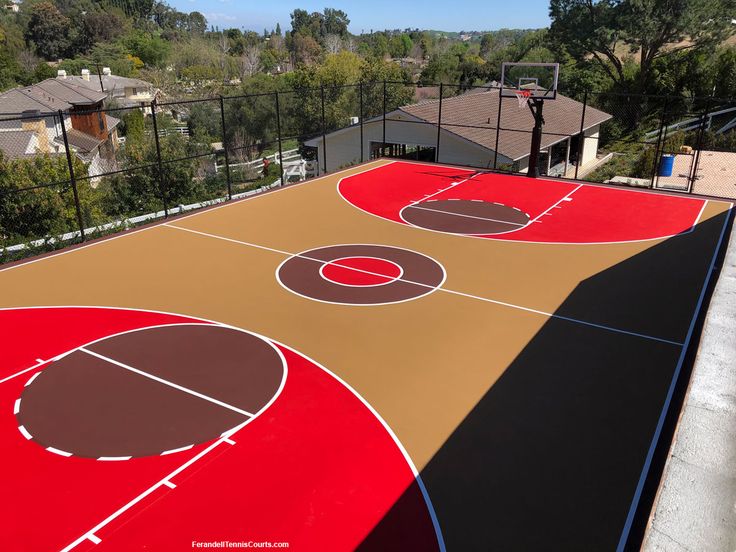 That means you merely have to multiply the measurements in feet to 12 to know the basketball court measurements in inches. So, a high school basketball court that is 84 feet in length and 50 feet in width is 1,008 inches in length and 600 inches in width. An NCAA and NBA court measures 1,128 inches in length and 600 inches in width.
That means you merely have to multiply the measurements in feet to 12 to know the basketball court measurements in inches. So, a high school basketball court that is 84 feet in length and 50 feet in width is 1,008 inches in length and 600 inches in width. An NCAA and NBA court measures 1,128 inches in length and 600 inches in width.
A Brief History of the 10-foot Hoop and the Three-Point LineIf you have previously wondered why the height of the basketball hoop is 10 feet, it’s not really rocket science. The answer is not about human anatomy and the game’s mechanics. Instead, it is merely because of what’s there when Dr. James Naismith invented the game.
When Naismith thought about inventing a new game, the railings where he chose to hang the peach basketball were 10 feet off the ground. Therefore, there really was no forethought about the height of the hoop. The game of basketball has evolved so much since the day it was invented in Springfield, but the one thing that remained was the 10-foot hoop.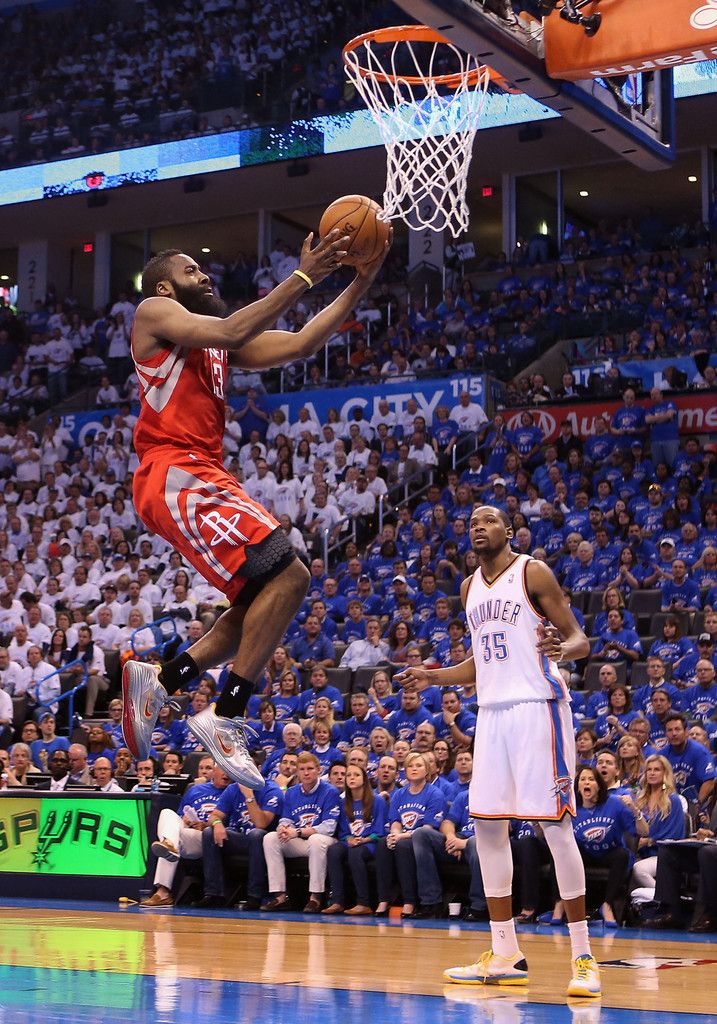
If there was absolutely no deliberation about the height of the hoop, that is not the case when it comes to the three-point line. The three-point line first appeared in 1961 by the American Basketball League. It was invented to increase excitement and scoring, but since the ABL folded in one and a half seasons, the idea never had the chance to hit off.
The second professional basketball league that adopted the three-point line was the American Basketball Association. It was a success, but when the ABA merged with the NBA, the decision-makers did not support having a three-point line and stubbornly refused to implement it. It was not until three years later, in the 1979-80 season, that it was introduced in the NBA.
After the NBA, college basketball adopted it in 1986, and high school basketball followed suit in 1987. Interestingly, the NBA tried to move the three-point line from 23 feet and nine inches to a uniform 22 feet from 1994 to 1997. Obviously, that did not last, but a four-point line or spot was possibly considered, but right now, that pretty extreme idea is only implemented in the Big 3 league.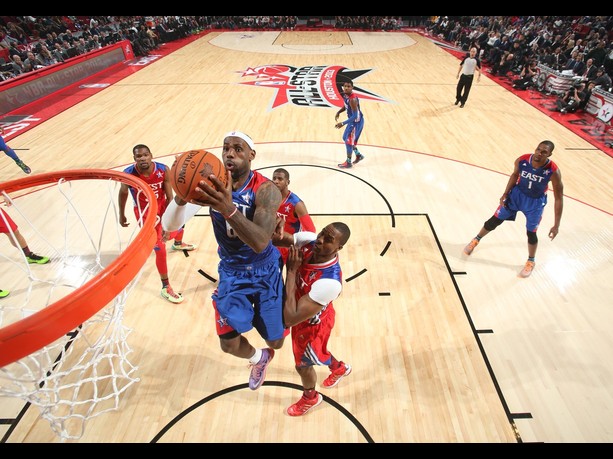
Wrapping Things Up: How Many Yards is a Basketball CourtA high basketball court has standard dimensions of 84 feet by 50 feet, while NCAA and NBA basketball courts measure 94 feet in length and 50 feet in width.
There are a few key differences between a high school and college/professional basketball courts, such as the width of the lane, the length of the three-point line, and the size of the restricted area. Other than that, they are all pretty similar.
Most of the time, we often see the dimensions of a basketball measured in feet. So, what if you want to know how many yards is a basketball court? Just multiply feet by ⅓ or 0.33333 since one foot is equal to 0.33333 or ⅓ yard. Therefore, a high school basketball court measurement of 84 feet by 50 feet is 28 yards by 16.67 yards. All it needs is basic mathematics that involves the conversion of units and basic arithmetic.
If you found this post helpful, you’re definitely going to like our other basketball FAQ articles here.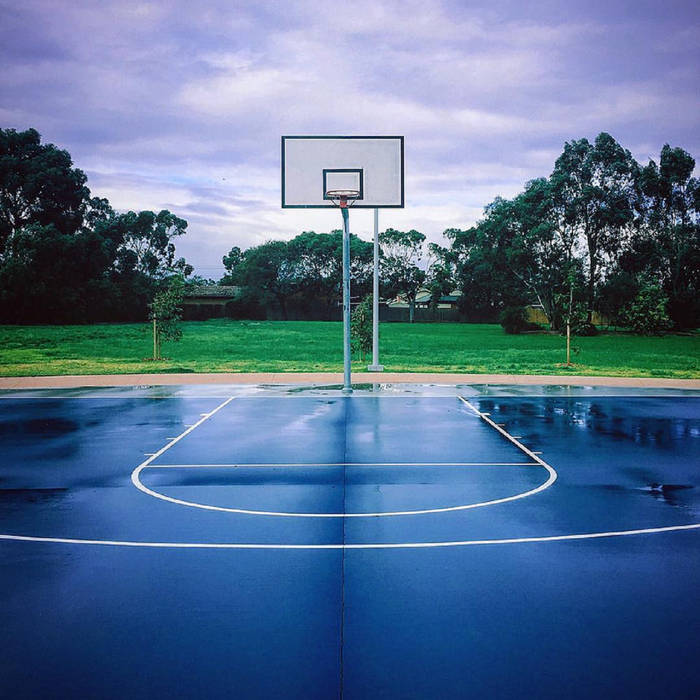
> How High is an NBA Basketball Hoop?
> What Size is an NBA Basketball?
> How to Paint a Basketball Court
> How to Make a Basketball Court Cheap
How Many Yards Is A Nba Basketball Court?
To play a game of football in your backyard, you will need an area larger than 502.31 yards². If run-offs and sidelines are required, the total playing area becomes 810yds².
Converting from inches to yards: 1 inch = 2.54 feet, so 16.4 yards would be equivalent to 0 .386333 miles or 3100ft You can calculate how large an outdoor space needs by using this handy formula:Area = Playing Area ÷ Number of Field Positions÷ 100 When planning for a backyard sport event like football, keep in mind that the playing area is not just square footage but also includes any run-offs and sidelines needed for safety reasons.
How Many Yards Is A Nba Basketball Court?
If you are looking for an outdoor space that accommodates a variety of activities, the playing area should be at least 502.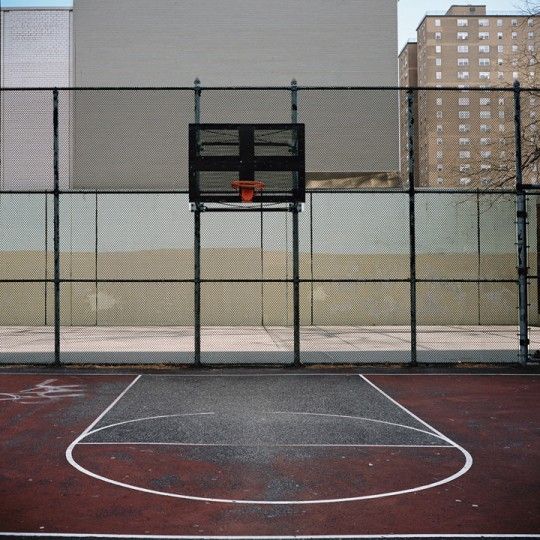 31 yards² in size to accommodate all needs.
31 yards² in size to accommodate all needs.
To convert from inches to yards: 1 inch = 2.54 feet, so 16.4 yards would be equivalent to 0.386333 miles or 3100ft in length and width measurements respectively on a standard football field gridiron-style playing area layout .
3rdly, if run-offs and sidelines are required (which they often are) the total playing surface becomes 810yds² – enough room for several teams of children to play without being too close together or obstructing one another’s view.
And lastly always consult with local building codes before starting any construction projects as some modifications may need to be made in order not compromise safety during game play.
The playing area is 502.31 yds²
The playing area of an NBA basketball court is 502.31 yds². This size varies depending on the type of court, but is always large enough for a full-court game without any obstruction to players or spectators.
In order to make it easier for spectators and players alike, courts are usually divided into thirds by lines drawn at ground level dividing the space into north, south, east and west areas – just like in real life games.
To ensure that everyone has an equal opportunity to play, each half of the playing surface (north and south) measures 100 ft² while the east and west halves measure 50 ft² each – giving every player roughly 1 square foot of space to show their skills.
If you’re looking for a detailed map with dimensions showing the exact location of each line on all NBA courts across America please click here: http://www2aol…basketball-courts/
If run-offs and sidelines are required, the total playing area becomes 810yds²
A regulation Nba basketball court measures 100’x100′. If run-offs and sidelines are required, the playing area becomes 810yds². Because of this, you’ll need at least half a acre for a full-sized court.
You can find small courts near you if you don’t have enough land or large courts that can accommodate up to 10,000 people online. Keep in mind that setting up your own court will require some time and effort.
To convert from inches to yards
Converting between inches and yards can be a little confusing, so here’s a guide to help you out: 1 inch = 2.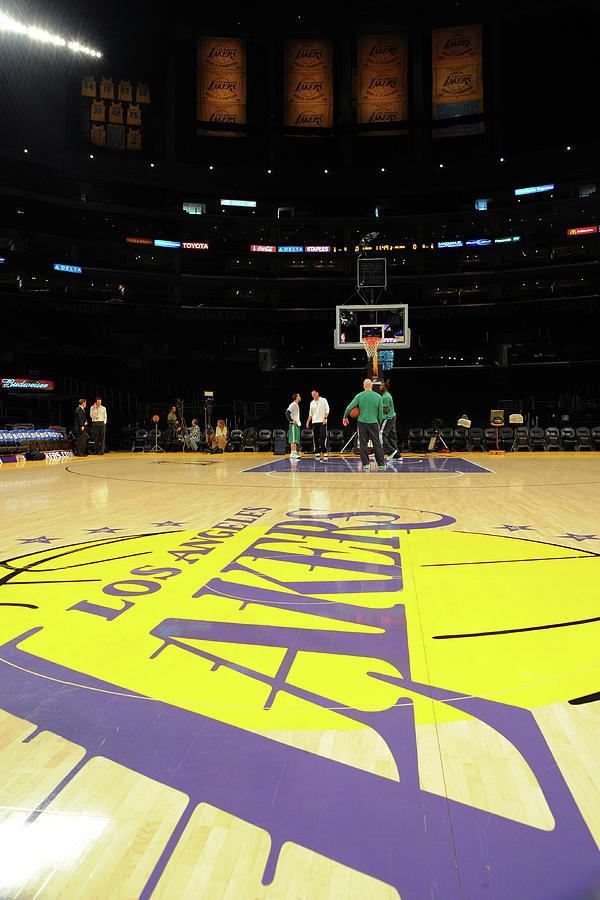 54 feet, so 16.4 yards would be equivalent to 0.386333 miles or 3100ft If you want to convert from inches to meters, divide by .3937 – this will give you the equivalent in meters To convert from yards to meters, multiply by .9144 There are many basketball courts of different lengths – if in doubt, measure your playing area and use that as a guideline for converting yards into meters As always when working with measurements, it is important to have some sort of reference point (in this case an actual NBA court)
54 feet, so 16.4 yards would be equivalent to 0.386333 miles or 3100ft If you want to convert from inches to meters, divide by .3937 – this will give you the equivalent in meters To convert from yards to meters, multiply by .9144 There are many basketball courts of different lengths – if in doubt, measure your playing area and use that as a guideline for converting yards into meters As always when working with measurements, it is important to have some sort of reference point (in this case an actual NBA court)
How big is a NBA basketball court in yards?
A NBA basketball court is about 100 feet long and 50 feet wide.
- The length of a basketball court is 31.3 yards long, which is the same as the half-court line distance of 16.67 yards wide.
- A basketball court’s length in yards is just under 5 feet shorter than its width at 16.67 yards wide – making it slightly smaller than an American football field.
- One quarter (0.75) of a NBA basketball court measures 31.
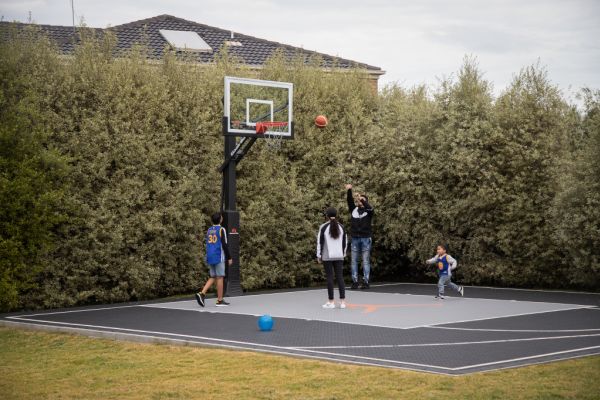 3 yards long and one eighth (0 to 8/16ths) measures 16 3/8 yard long.
3 yards long and one eighth (0 to 8/16ths) measures 16 3/8 yard long.
How long is an NBA court?
The dimensions of an NBA court have not changed in over 80 years and remain the same for each team. It is important to keep your court dimensions in good condition so that it can continue to be used for basketball.
If the court does not meet the standards set by the NBA, it may need to be replaced. Courts are often resurfaced or refinished which can change their dimensions; however, they will always measure 100 feet long and 50 feet wide on each side
How long is a NBA court in meters?
A NBA court is approximately 100 meters long.
The Length of a Basketball Court
A basketball court is approximately 60 feet long and 18 feet wide.
The height of the court varies depending on the level or league that you are playing in, as some leagues have higher courts than others.
The Height of a Basketball Court
The height of a basketball court ranges from 2 meters to 2.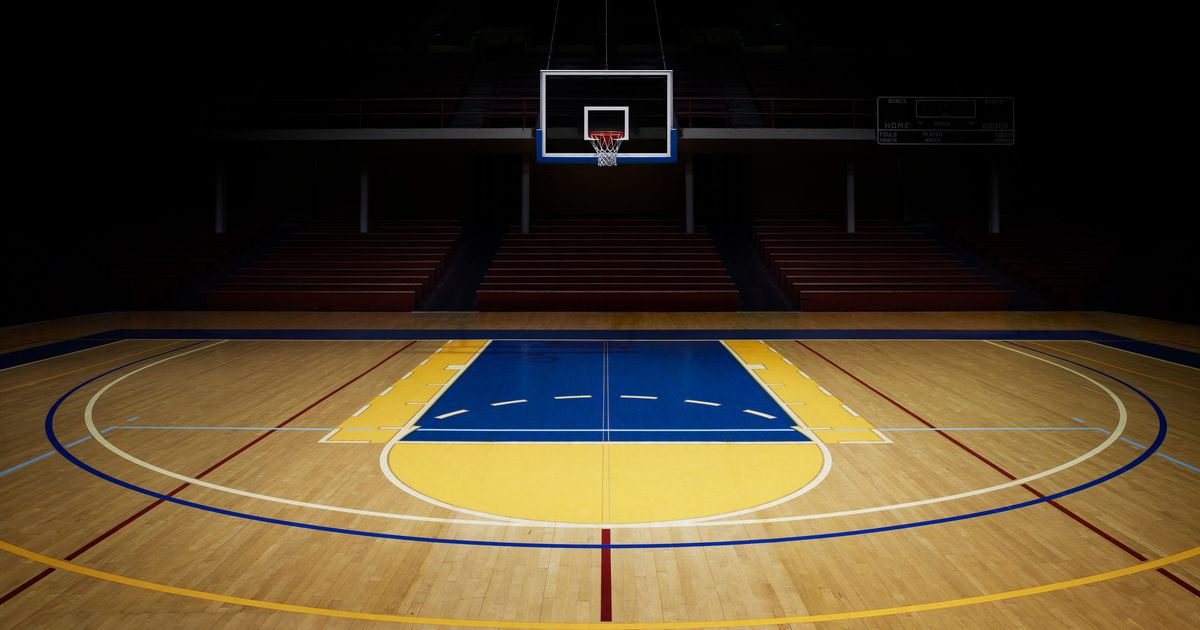 31 meters, which makes it one of the tallest sports fields in the world.
31 meters, which makes it one of the tallest sports fields in the world.
What is the Size of an NBA Court?
An NBA regulation-sized basketball court measures 100 by 50 feet (30 x 15 m).
Amateur levels may be slightly different in size due to space limitations or because they cater more towards smaller players rather than taller ones like those found at professional games.
Amateurs Play on Levels That Vary Slightly From League To League and Country To Country But Typically They Are Larger Than NCAA Fields Which Measure 85 Feet Long And 45 Feet Wide For Men And 75 Foot By 35 Foot For Women In College Athletic Programs Worldwide Excepting North America where They May Be As Small As 63 Feet Long 40 Foot Wide Due To Space Limitations At Many Schools And Also In Europe.
There Is A Range Of Sizes Between 70-85 Feet Long Depending On Location With Most Being Around 80feet Long 50Foot Wide Except For Serbia Where It’s 95FeetLong 55FootWide Because Of Its Unique Arena Construction. .
.
Professional Leagues Use Courts That Are Exactly 90×50 Yards Which Allow for More Possibilities When Placing Objects Within The Playing Area Such As Rugs Or Benches So Players Can Rest During Halftime Or After A Game Has Been Finished.
Is NCAA court smaller than NBA?
The NCAA basketball court is smaller than the NBA court, but both leagues use an identical size of 94 feet long by 50 feet wide. The WNBA and NCAA share an identical court size—94 feet long by 50 feet wide- making it easier for fans to follow their favorite teams sportingly.
High school courts measure 84feet long by 50feet wide, which makes them slightly shorter than the NCAA basketball court
How far is the 3 point line?
The 3-point line is a imaginary line that divides the court in half, just inside of the top and bottom of the circle. If you make three consecutive shots from behind the arc (one from each corner), you get a free throw.
There are different rules depending on whether the ball is passed or defended: if it’s guarded, for example, an extension means taking it out to beyond the three-point line; if it’s not guarded, making two consecutives shots counts as one shot.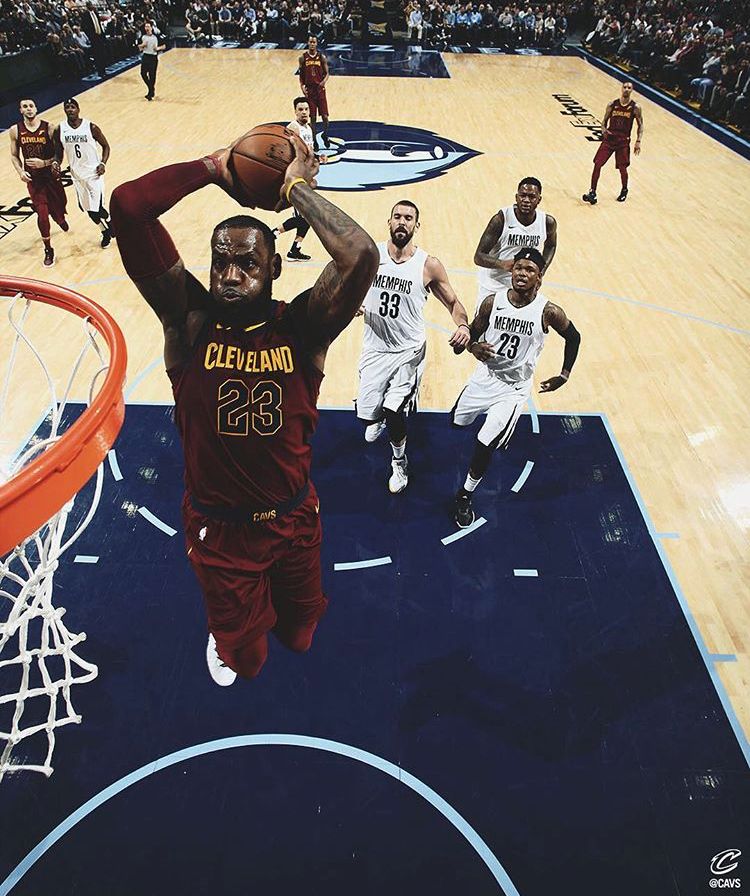
If someone makes two consecutive shots from behind thre3-point line and they have possession of tha ball after those shots were taken, they can either pass to somebody else OR try and shoot another basket; whichever option results in them having more points at that point wins.
Keep in mind – even though there may be some distance between your player and the basket when they take their last shot attempt(s), if they go beyond “the Three” then that counts as an “extension” or “outrebounded” shot which leads to a new set of rules.
Is NBA court bigger than college?
The NBA court is definitely bigger than the college basketball court. The NBA playing surface is about twice as wide as a college one. Additionally, the baskets are higher and further away from the ground, making it much harder to score on College Courts.
- The dimensions of the NBA court are similar to those of college basketball courts. Both have a free-throw lane that is 16ft wide and a paint area that is 50 feet wide.

- The paint area on an NBA court is slightly larger than on a college court, as it includes the surrounding walls and ceiling.
- One major difference between the two types of courts is the size of the referee’s whistle – referees use a much smaller whistle in the NBA compared to NCAA basketball games. This difference allows for more contact during play and results in more exciting games.
- Finally, one other significant difference between these leagues involves how their fans behave – while both fan bases can be quite loud at times, NHL crowds tend to be considerably louder than those in Division I or II college hoops arenas.
To Recap
A basketball court is about 100 feet long and 50 feet wide.
Similar Posts:
What Is A Dime In Basketball?
A dime in basketball is a small amount of money that is given to players at the beginning of each game. It is usually given to the player who makes the first basket, or the player who has the most assists.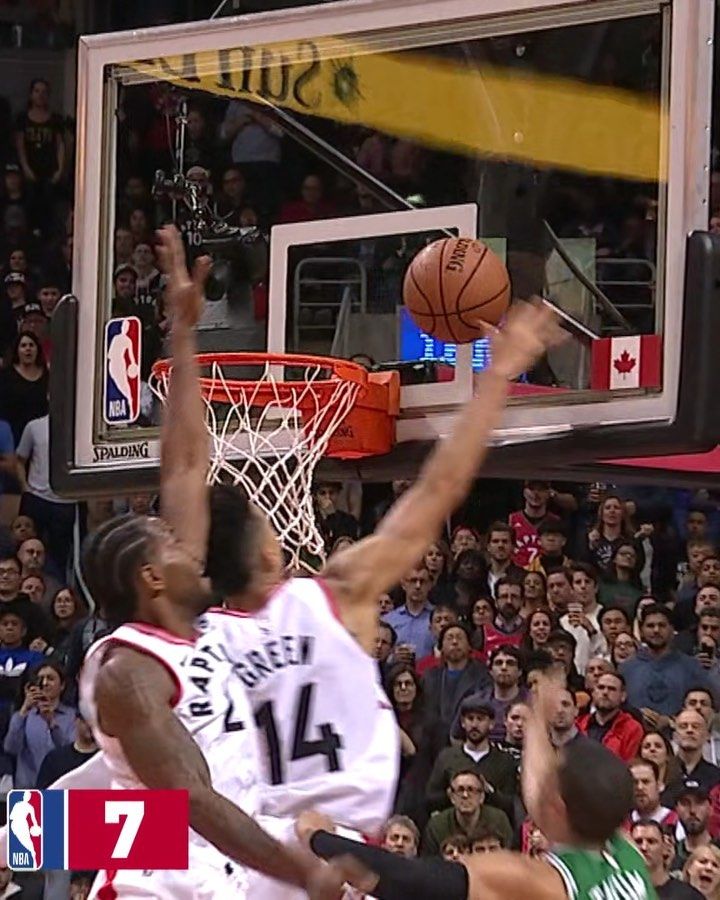
How Wide Is A Batting Cage?
A batting cage is an essential piece of equipment for any baseball or softball player. It gives players a safe and secure place to practice their swing, while also providing a fun and entertaining environment.
How Wide Should A Batting Cage Be?
A batting cage should be as wide as the distance between the two dugouts. The minimum width is feet, while the maximum width is feet.
Can You Catch Your Own Airball?
When you play basketball, it’s important to keep your hands close to the ball at all times. If you catch an airball, that is when the ball goes off the side of the court and into your hand before it reaches the ground.
How To Make An At Home Golf Net?
Making an at home golf net is easy. All you need is a piece of sturdy cardboard, some tape, and a hole saw.
How To Make A Yardage Book?
A yardage book is a great way to keep track of your yardsale items, and it’s also a great resource for sewing patterns.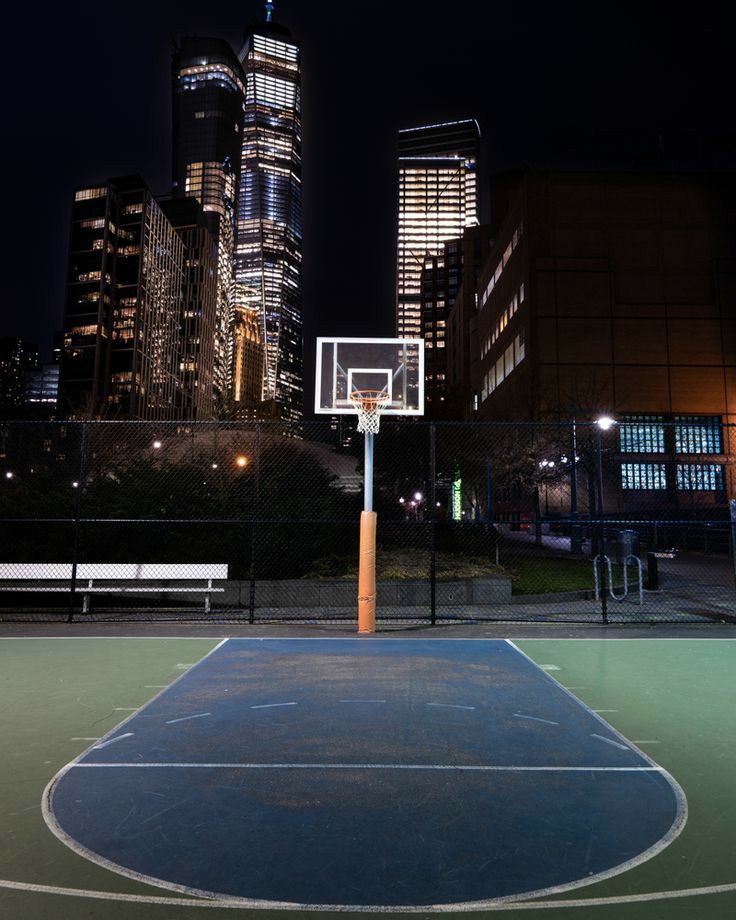 The best part is that you can make one yourself or purchase one already made.
The best part is that you can make one yourself or purchase one already made.
Basketball court markings: standards and norms
Author of the article
Khvatkov Dmitry
Consultant in the production of rubber coatings
Basketball field marking requirements are approved by the FIBA standard. The site must be flat with a hard surface, free of bends, cracks and other obstacles. The accepted dimensions of the field are 28 m long and 16 m wide. By NBA standards, the field is slightly larger: 28.7 m (94' ft) long and 15.3 m (50' ft) wide.
Areas not intended for international competitions may differ from accepted standards (for public use, in schools or universities, etc.) and usually vary from 20 to 28 m in length and from 12 to 16 m in width.
Basketball Court Marking Standards
Basketball court markings are conventionally divided into 5 components:
- Boundary lines. They are located along the perimeter of the site and set its size.
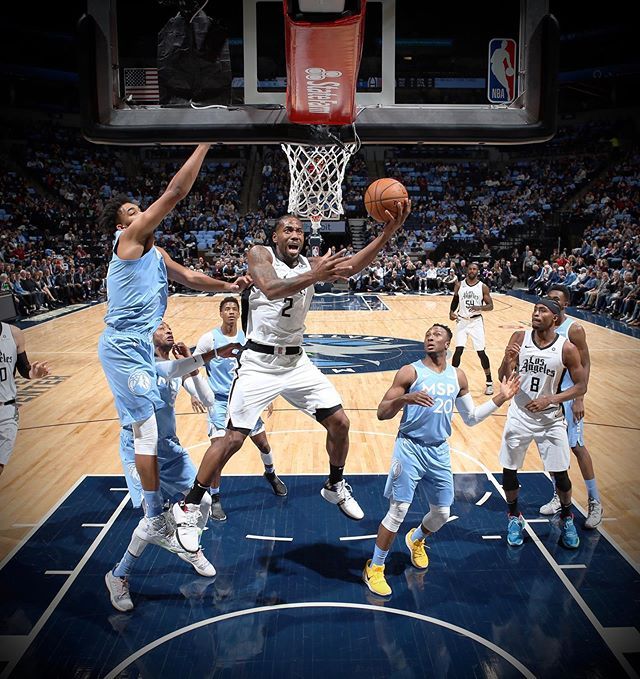 The lines that run along the field are called side lines, and those that are behind the baskets are called front lines.
The lines that run along the field are called side lines, and those that are behind the baskets are called front lines. - Central line. Divides the court in half parallel to the front lines.
- Central zone. It is a circle and is placed in the middle of the center line, and, accordingly, in the center of the entire field.
- Three-point line. It is a semi-ellipse and is located around the shields on both sides of the field. It limits the close range.
- Free throw line. It is located in front of the boards parallel to the front line and is limited on the sides by paint lines.
The standard line width is 5 cm. All outlines and lines must be of the same color (usually white) and be clearly visible from anywhere on the court.
Common lines
Common lines are used to limit the playing area of the court. The side lines (along the field) according to FIBA standards should be 28 m long, and the front lines - 16 m. For public areas, deviations from the accepted standards are allowed.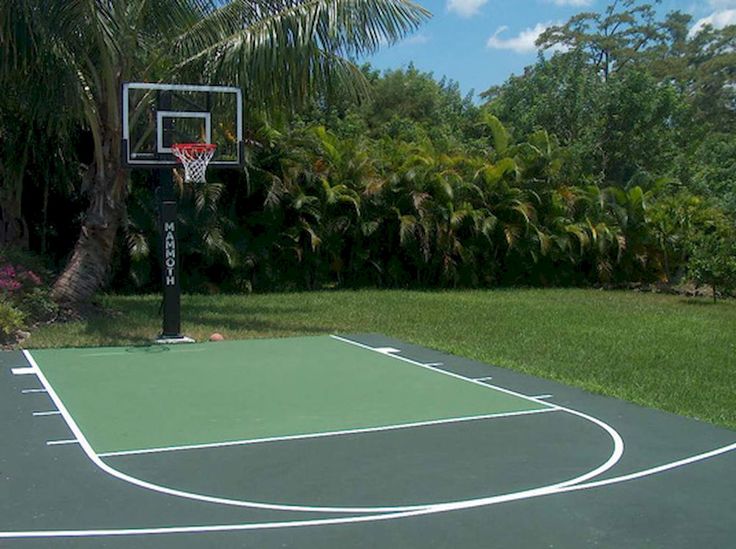 Typically, basketball courts in schools or gyms are made from 20 m long and 12 m wide.
Typically, basketball courts in schools or gyms are made from 20 m long and 12 m wide.
Central lines
The center line is parallel to the front and divides the field exactly in half. According to the standards - it should extend beyond the side lines by 15 cm on both sides.
In the middle of the center line there is a circle with a diameter of 3.6 m, which limits the central zone of the field. In this zone, the ball is played at the beginning of the game.
Three-Point Line
Three-Point Lines are located around the backboards on both sides of the field and consist of two straight lines 2.9 long9 m and a semicircle. Straight lines run perpendicular to the front at a distance of 0.9 m from the side lines. Despite the fact that visually the distance from the ring to the side of the three-point line seems to be less than to its central part, the distance from the backboard to any point is 6.75 m.
Penalty lines
Penalty lines limit the nearest area at the backboard.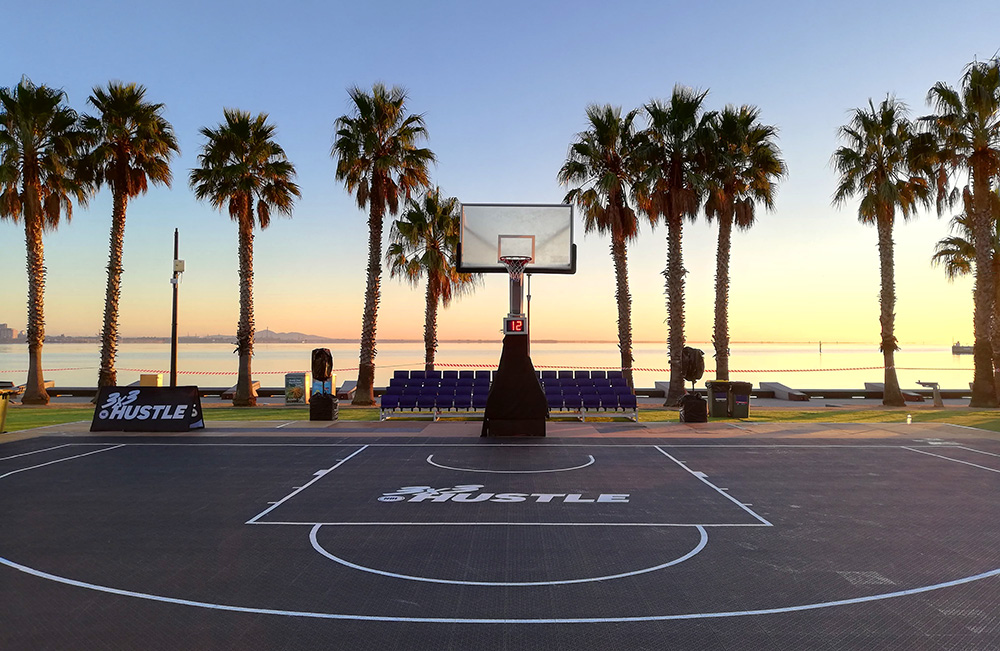 They consist of a trapezoid and a free throw zone.
They consist of a trapezoid and a free throw zone.
Despite the name, the "trapezium" is a rectangle (until 2009year it really was a trapezoid), which is located under the shield. Its dimensions are 5.8 meters long and 4.9 meters wide. The shield is located at a distance of 1.575 m from the end line in the middle of the court. In front of the backboard, at a distance of 1.25 m, there is a semicircle that limits the area for picking up the ball.
At a distance of 4.225 meters from the backboard, the trapeze zone ends and the free throw zone begins. It is a semicircle with a diameter of 3.6 m (like the central circle).
Paint zone lines
These lines are serifs on both sides of the trapezoid (parallel to the side lines). They limit the areas for players who are fighting for the ball during a free throw.
Zones on the basketball field
The basketball court is divided into zones using markings. Each zone has its own specific rules.
Center circle
The center circle is used as a separate kick-off area at the start of the game.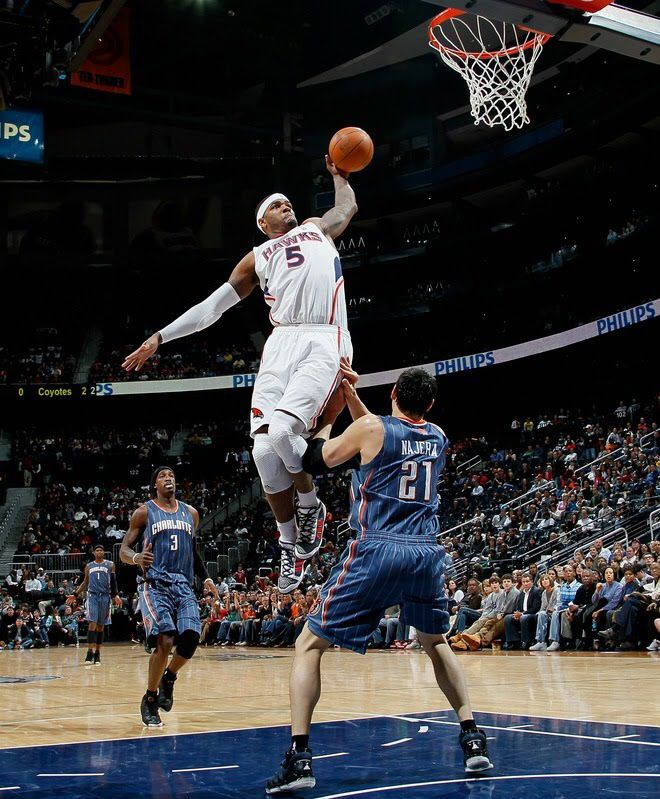 One representative from each team stand in a circle from their side and fight for the ball in a jump, after it is dropped by the referee. All players are exclusively on their side of the field, except for one who rebounds on the opponent's side.
One representative from each team stand in a circle from their side and fight for the ball in a jump, after it is dropped by the referee. All players are exclusively on their side of the field, except for one who rebounds on the opponent's side.
Neutral zone
The peculiarity of this zone is that as soon as the player of the attacking team with the ball crosses the center line and is on the side of the opponent, he cannot pass the ball to the player of his team who is on the other side of the field (i.e. behind center line on your side).
Three-point zone
The three-point line limits the near zone of the shot. Hitting the basket from outside the basket brings the team three points. If the throw was made inside the zone, then it brings two points.
Three-second zone
This is the zone in close proximity to the ring. It is called three-second, since the player of the attacking team cannot be in it for more than three seconds. Most balls are thrown in this zone, so when attacking, it provides maximum protection.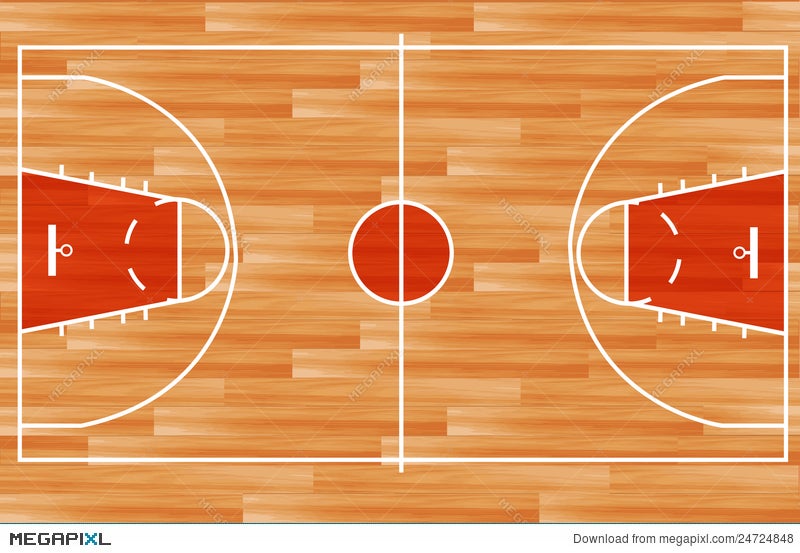
Free throw area
In controversial situations, a free throw is provided from this area. The player of the attacking team must score the ball without stepping over the line of the trapezoid. At the same time, the players of both teams are not in the three-second zone. They take up positions along the paint lines on the sides of the trapezoid and may not step outside the lines until the free throw shooter has shot the ball.
How to mark a basketball field?
Basketball field markings, whether it is an international competition court or an open-air amateur field, are best applied using special equipment. This will ensure the long life of the coating, the lines will not clog and will promote fair play.
You can order the marking of a basketball court in Moscow and the Moscow region from Rezkom. We will measure the premises and develop a design project for the field so that it complies with generally accepted rules and is convenient for operation. For more details, you can contact our manager by phone 8-495-64-24-111.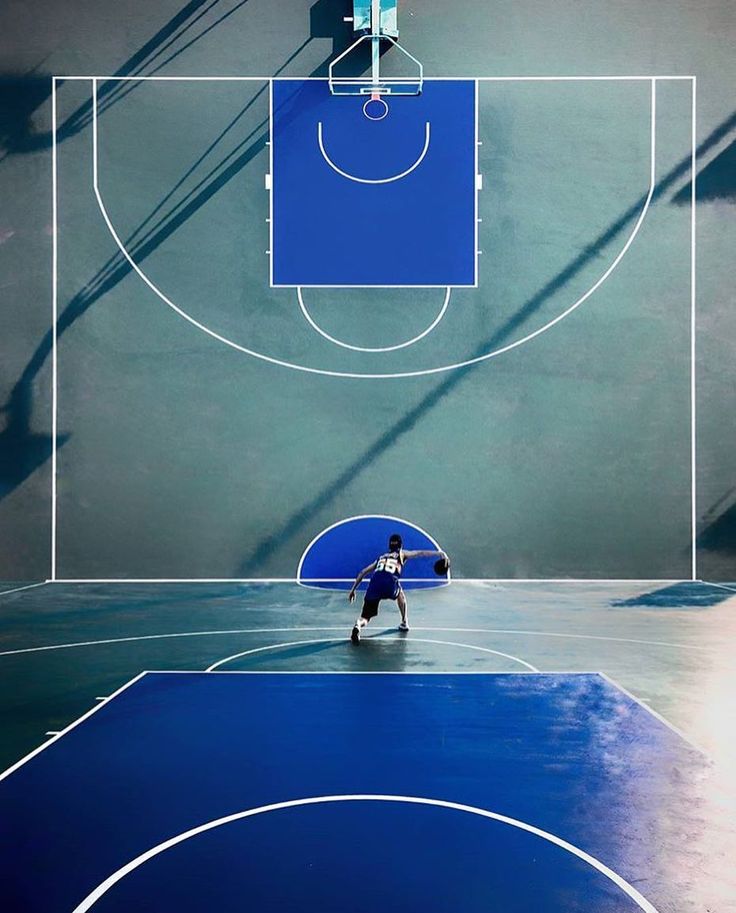
Basketball court dimensions in meters (FIBA and NBA standard)
Home / All sports / Basketball court dimensions in meters (FIBA and NBA standard)
12/24/2019 All sports Leave a comment 33,348 Views
Share with friends
The size of the basketball court depends on the level of the competition, the governing organization, and the age of the students. Often, for training sessions or fights in amateur tournaments, different sizes of the playing court are used, but also in basketball there are officially established standard sizes of the field.
FIBA and NBA Basketball Court Sizes
According to International Basketball Federation (FIBA) rules, the court must be rectangular and measure 28 by 15 meters (91.9 by 49.2 feet). However, in the overseas version of basketball, where the ruling organization of this sport is the National Basketball Association (NBA), the dimensions of the field for professional competitions are slightly different - 28.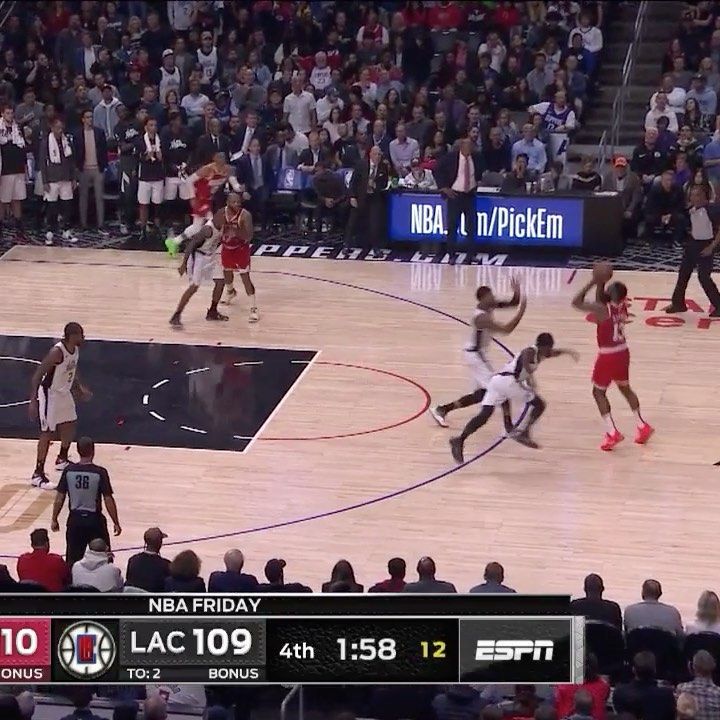 7 and 15.24 meters (94 by 50 feet).
7 and 15.24 meters (94 by 50 feet).
As for amateur basketball, the size of the fields can be completely different:
- For schools and universities: 21-28 m long, 12-15 m wide
- Mini basketball (for children under 12) - 17×12 meters
Basketball court markings
All field lines must be 5cm wide in white. The playing area is limited by the side and front lines. The middle line divides the court in half into equal parts. In the center of the middle line there is a circle with a diameter of 3.6 m (r - 1.8 m), where a dropped ball is played before the start of each period.
How many periods in basketball: the difference between FIBA and NBA
There is an arc near each hoop at a distance of 6.75 m from the end line. Balls thrown into the basket outside it bring 3 points, everything inside the arc - 2 points.
Basketball's free throw zone is marked by a 3.6m line 5.8m from the endline and 4.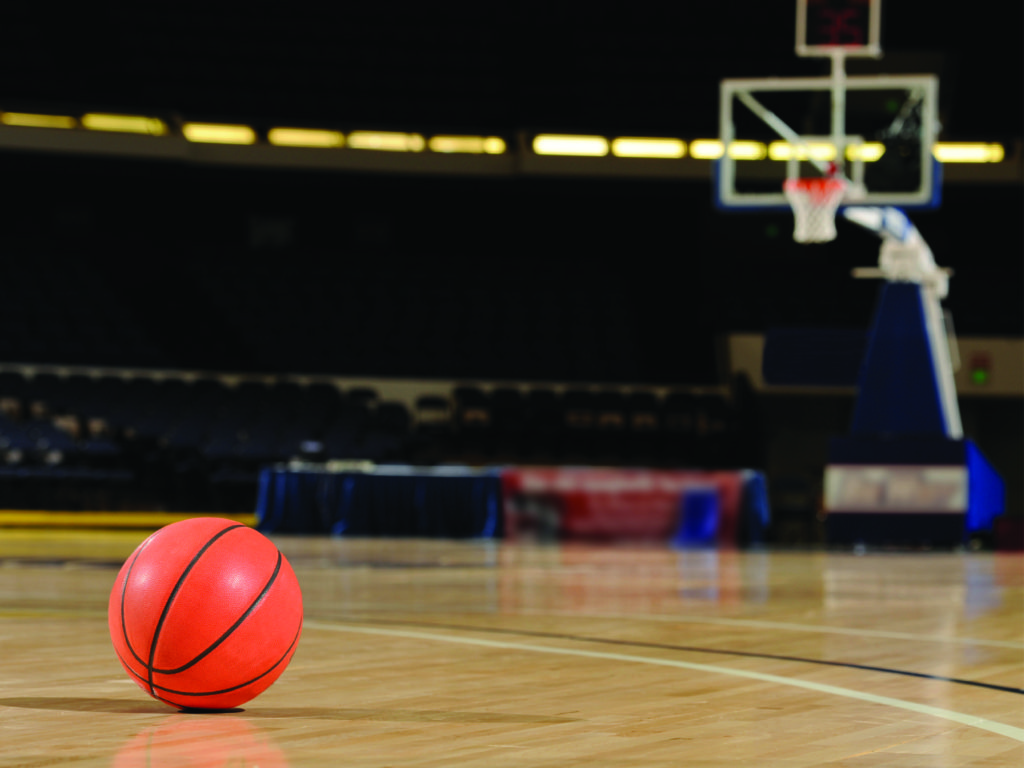 6m from the hoop.
6m from the hoop.
See picture of a basketball court with all lines and dimensions.
Differences in the rules for the size and layout of the court in the NBA and FIBA
| Playground | FIBA size | NBA size |
| Length (meters) | 28 | 28.65 |
| Width (meters) | 15 | 15.24 |
| Ring height (m) | 3.05 | 3.05 |
| Center circle diameter (m) | 3.60 | 3.60 |
| 3 points line (distance from the basket in meters) | 6.75 | 7.24 |
| Distance from the basket to the free-throw line (m) | 4.60 | 4.67 |
| Court line width (cm) | 5 | 5 |
The First Basketball Court Dimensions: A Brief History
The first basketball court was limited to the size of the college gym it was located in.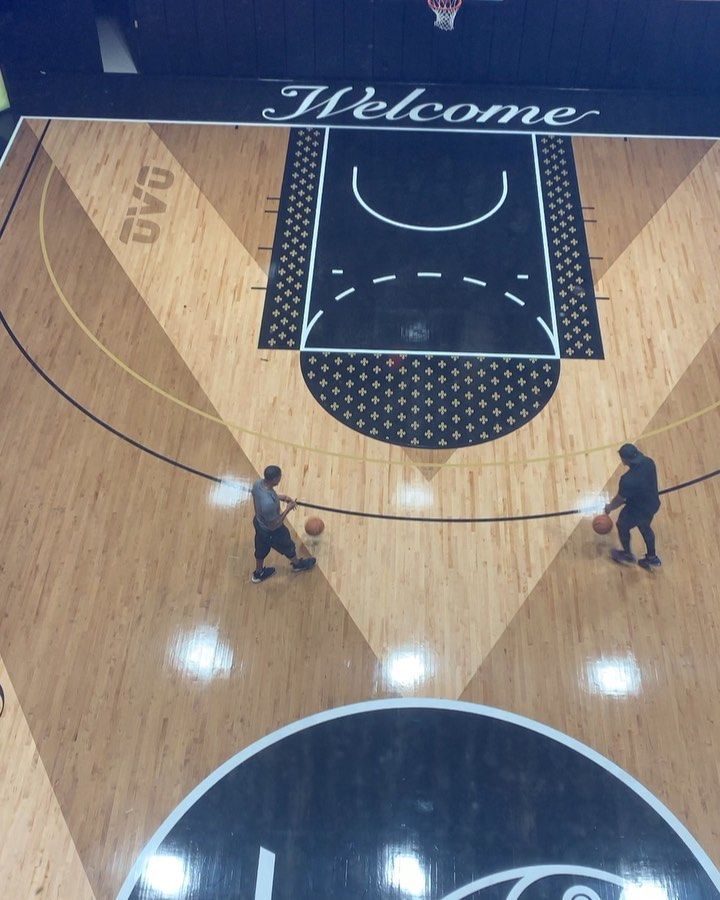 That hall measured 54 by 35 feet (16.45 × 10.66 meters).
That hall measured 54 by 35 feet (16.45 × 10.66 meters).
In 1891, James Naismith, a physical education teacher at Springsfield College in Massachusetts, invented a new game he later called basketball. At the first stages of the formation of a newly-fledged sport, peach baskets were used instead of rings, and in its first 13 rules, the creator did not indicate the size of the site. As basketball grew in popularity, it became necessary to standardize the size of the field. In 1924, the rules established the maximum size of the site - 28.65 by 15.24 m and the minimum - 18 by 9meters. The NBA still has such rules for the size of the court (28.65 by 15.24 meters), and FIBA eventually set its own standard - 28 × 15 meters.
Basketball rules concise and clear point by point
2019-12-24
Check also
Share with friendsThe rematch of Usyk vs Joshua will take place on August 20, 2022.